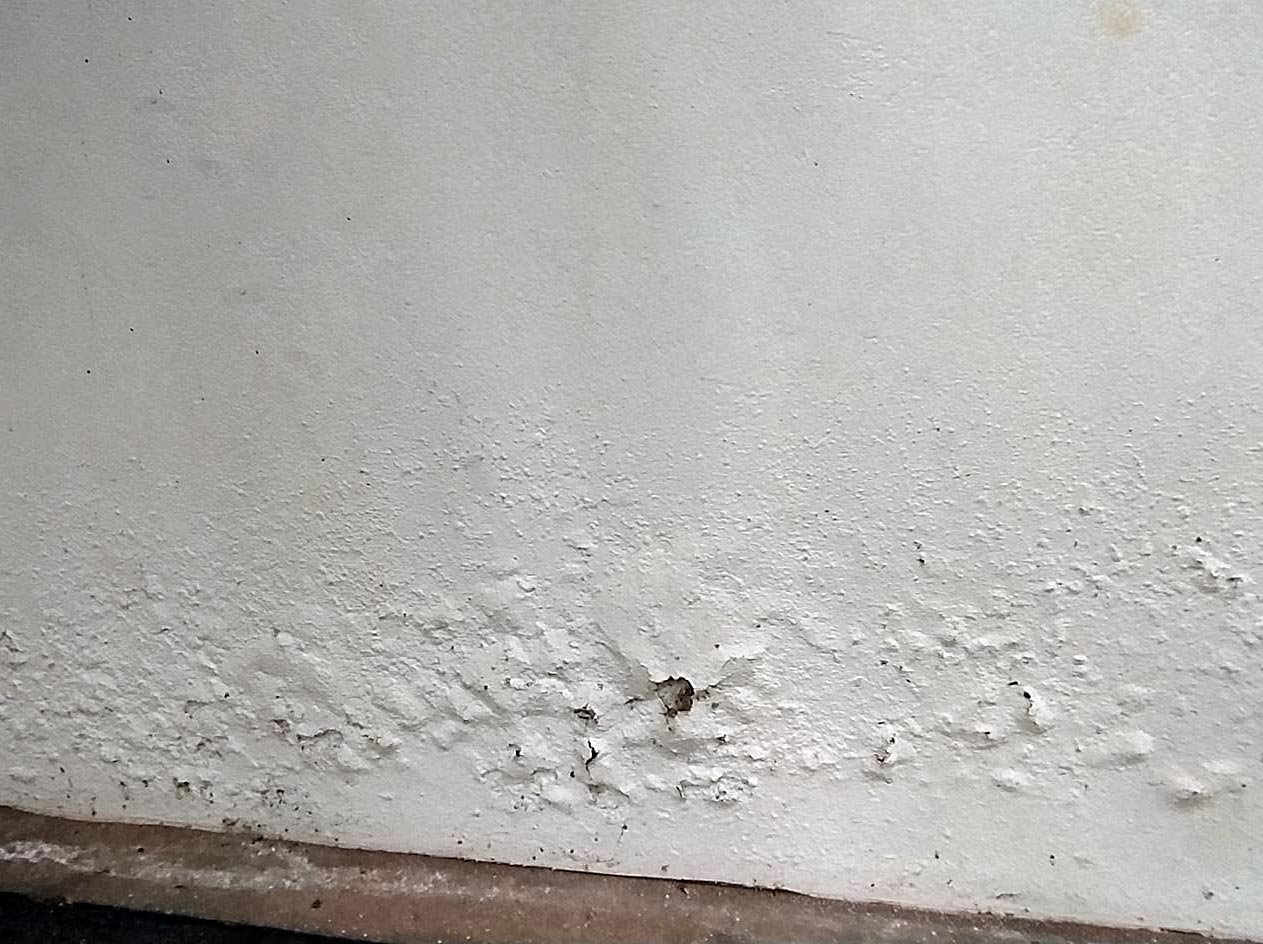Capillary reaction, often referred to as capillary rise, in the context of house walls, pertains to the phenomenon where moisture or water is drawn upward through porous building materials such as bricks, concrete, or masonry due to capillary action. This can be a concern in building construction and maintenance because it can lead to various issues, including dampness, efflorescence, and damage to the structural integrity of the building.

The process of capillary reaction occurs because of the natural property of porous materials to wick up moisture against the force of gravity. This moisture may originate from various sources, including groundwater, rainwater, or even moisture within the building itself. Here's how capillary reaction typically works:
Porous Material: The building materials, such as bricks, stones, or concrete blocks, are typically porous. These pores or capillaries within the material serve as conduits for moisture.
Water Source: If there is a water source, such as a groundwater table, a high water table, or heavy rain, water can infiltrate the ground and rise up through these capillaries within the building material.
Capillary Action: The water molecules adhere to the surface of the material and are drawn upwards due to capillary forces. This is similar to the way a paper towel draws up liquid when one end is submerged in a liquid.
Moisture Movement: As the water rises through the capillaries in the building material, it can ultimately reach the interior or exterior surface of the wall. This can manifest as damp spots or even efflorescence (white, powdery deposits) on the wall's surface.
Capillary reaction can have negative consequences for a building, including:
Dampness and Staining: The rising moisture can lead to dampness and staining on the wall's surface. This can be both unsightly and potentially harmful to the interior environment.
Structural Damage: Over time, repeated exposure to moisture through capillary reaction can lead to structural damage and the deterioration of the building material. This can weaken the wall and reduce its lifespan.
Mold and Mildew Growth: Moisture in the walls can create favorable conditions for mold and mildew growth, which can be detrimental to indoor air quality and health.
To address capillary reaction in house walls, various measures can be taken during construction or for existing buildings:
Damp Proofing: This involves using damp-proofing materials and techniques to prevent the rising moisture from entering the wall.
Waterproofing: For areas prone to heavy moisture, waterproofing the walls can be an effective solution.
Proper Drainage: Improving drainage around the building, including the use of proper drainage systems, can help divert water away from the walls.
Sealants and Coatings: Applying sealants and coatings to the walls can create a barrier that prevents moisture from entering.
Capillary reaction or capillary rise, a common issue in many Kerala homes due to the region's tropical climate and the widespread use of porous building materials like bricks and concrete blocks. To address this problem, you can implement several solutions to mitigate or prevent capillary reaction in your Kerala home:
Solutions for Capillary reaction in Kerala homes
Damp Proofing and Waterproofing:
- Apply damp-proofing materials or coatings on the foundation and walls. These materials act as barriers, preventing moisture from being drawn up through capillary action.
- Consider waterproofing the walls, especially in areas with high rainfall. Waterproof coatings create a watertight seal, protecting the structure from moisture infiltration.
Proper Drainage:
- Improve the drainage around your home to divert rainwater away from the foundation and exterior walls. Ensure that gutters and downspouts are clear and functional.
- Grade the land around your home so that it slopes away from the foundation. This helps prevent water from accumulating near the walls.
Drainage Systems:
- Install a French drain or subsurface drainage system around the foundation to collect and redirect groundwater away from the walls.
- Ensure that the drainage system is properly designed and maintained.
Elevated Foundations:
- In regions with a high water table, consider constructing homes with elevated foundations to reduce direct contact with the ground and mitigate capillary reaction.
Surface Treatments:
- Apply water-repellent coatings to the exterior walls. These coatings can help minimize the intrusion of water and reduce capillary rise.
Improved Building Materials:
- Consider using less porous building materials for construction, such as autoclaved aerated concrete (AAC) blocks or specially designed low-porosity bricks.
- Incorporate effective waterproofing membranes or vapor barriers within the wall structure during construction.
Proper Construction Techniques:
- Ensure that the building materials are properly installed with appropriate sealing and flashing details to prevent water infiltration.
- Implement construction practices that promote good drainage and ventilation, both in the foundation and the walls.
Regular Maintenance:
- Periodically inspect your home's walls for signs of dampness or efflorescence. Address any issues promptly to prevent further damage.
- Maintain gutters and downspouts to prevent water from overflowing and pooling near the walls.
Consult a Professional:
- When dealing with severe capillary reaction or if you're uncertain about the best solutions for your specific situation, consult a professional builder, architect, or structural engineer. They can assess the issue and recommend appropriate remedies.
It's important to note that the effectiveness of these solutions may vary depending on the severity of capillary reaction, the type of building materials used, and the local climate conditions. Implementing a combination of these strategies may be the most effective approach to mitigate capillary reaction and protect your Kerala home from the associated issues of dampness and structural damage.
It's essential to address capillary reaction early to prevent potential damage and maintain the integrity of the building. If you suspect capillary action is affecting your house walls, it's advisable to consult with a building professional or structural engineer to assess the situation and recommend appropriate mitigation measures.

















No comments: